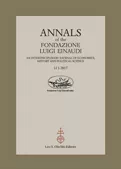The disruptive forces that only a few months ago threatened disintegration of the European Monetary Union (EMU) seem to have been defused, albeit only in part and in extremis. On the world scale, the improved relations between the United States and the European Union have not entirely dispelled the threats represented by the rapid shift from rules to power, from globalisation to protectionism, from Europe to Asia. Internally, the pandemic has mitigated the widespread disaffection with the European project (populism), but it has magnified the divergence between the core and a southern periphery which, having never fully recovered from the 2008 crisis, has been hit hardest by the pandemic. With massive public and private debt, the biggest threat to the European Union’s post-pandemic recovery is premature fiscal tightening and a return to the old rules. Germany’s stance is decisive in defining the European response to these multiple challenges, since where Germany goes, the Eurozone will follow. Germany cannot go it alone in the international arena, but it can go on either together with the other member countries – giving a helping hand in the development of the whole European area – or as the leader of an economic empire. Although past experience has demonstrated the short-sightedness of the latter option, the outcome of these two conflicting positions is uncertain. Indeed, the German model is not monolithic but, rather, a complex, tense and changing process of antagonism and accommodation between different domestic ‘advocacy’ coalitions. It exhibits over time subtle shifts in its centre of gravity, depending on the particular situation and on which coalition is ascendant on particular issues. In the past, the prospect of the system imploding succeeded in mobilizing counteractive forces strong enough to stall disintegration, but not to set the Union on a long-term sustainability path. The paper investigates the economic and political conditions for this to come about, arguing that it would require nothing short of a U-turn in economic theory and policies, at the macroeconomic, industrial and social policy level. The world economy is undergoing a structural change of proportions comparable to that experienced in the 1970s. The accelerated pace of technical change poses a serious threat to the entire EU, and in particular to its weaker members. Preventing the digital transformation from becoming an additional factor of polarization would call for a new, more cohesive industrial policy, which includes a broad investment programme and a combination of protection, administrative guidance, and encouragement of controlled competition to activate linkages and fill the gaps in the productive structures of its member states. To become a more equal partner with the US and China, the EU must grow, economically and technologically. But this calls for the concerted action of all its members, a much more difficult condition for the EU to achieve, as it will require building a consensus between very different political economies, and which will come about only within a different theoretical and political approach. Will this time be different?



